
Table of Contents:
– Background
– Look and Feel
– Reticle Options
– Comparative Optical Evaluation
– Mechanical Testing
– Summary and Conclusion
– Your Pro and Con Breakdown
– Testing Methodology
Background:
Bushnell is the inventor of the most popular business model in the optics industry. In 1948 it’s namesake founder returned from honeymoon in allied occupied Japan with 400 pairs of binoculars. The successful sale of these persuaded him of the merits of starting an optics brand importing Japanese (and later other nationality’s) optics to the American market. He was way ahead of his time. Today, most optics brands are importers of products made by overseas OEM’s. In keeping with that theme of innovation in business models, in recent years, Bushnell has gone much further than most other brands with substantial brick and mortar presence to facilitate direct to consumer transactions. It’s website is fully, and seamlessly integrated with an e-commerce back end. This backend spans not just the Bushnell site but also those of it’s brother Vista Outdoor companies such as RCBS, Weaver, Hoppe’s and others. This system is how Bushnell handles it’s veterans discount as well and is quite frankly more functional and better organized (if you don’t count the confusing product line organization of Bushnell itself) than most dedicated e-commerce websites.
Of course, all branding of OEM optics is not the same. On the minimalist end, a brand might simply pick a stock design off of the OEM’s shelf and have it’s name printed on the optic perhaps with a unique reticle. Many brands do this and the value of such depends on the price, service, and, competition in the sector being what it is, if the company remains in business long enough to deliver the promised service. Bushnell is closer to the other end of the spectrum on most products and especially so on the Elite Tactical line. The XRS3 here being reviewed is an optical design produced by Bushnell and exclusive to them. The coatings, and reticle design are also exclusive. The manufacturing of the XRS3 6-36×56 is done in Japan and it is my expectation that like many of it’s competitors near it’s price range the well respected Light Optical Works, Inc. is it’s OEM for this line.
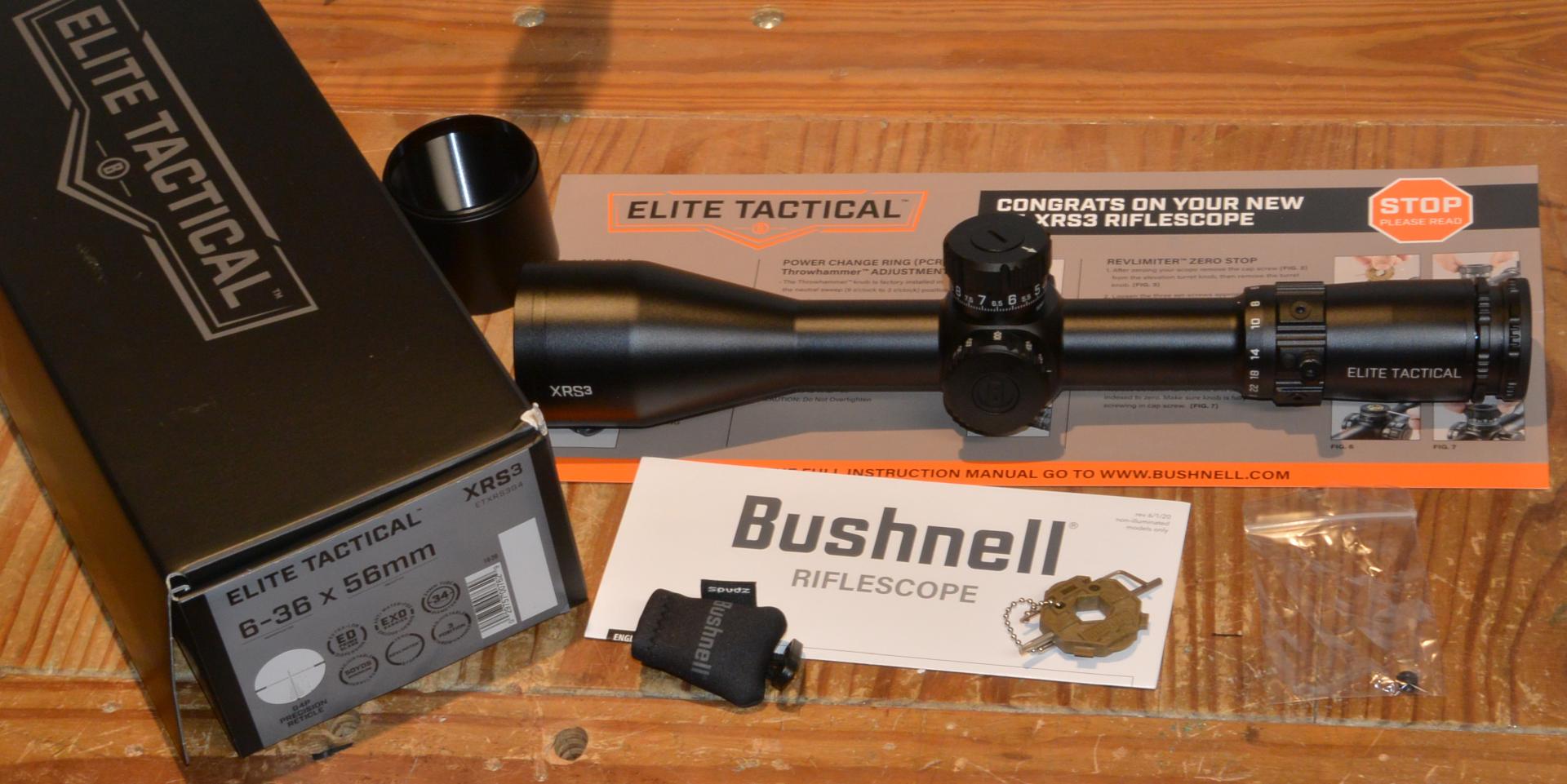
Look and Feel:
At the time I signed up to review the Bushnell Elite Tactical XRS3 6-36x56mm I did not actually know that it would be a six to thirty-six power optic. All I knew was that Bushnell was refreshing their Elite Tactical line and that the new optic would be in the price range of the scopes I was reviewing this year. It was a surprise when I opened the package to find a box proclaiming 6-36x and again a surprise when I opened that box to find a scope shorter than the average 5-25x. The XRS3 is 14.8″ long and weighs in at 38.9oz. This is a little shorter than average if it were a 5-25x and a good deal shorter than most 30+ power scopes. The weight is actually a little less than I would expect for a scope of this power from the OEM Bushnell is using though it is still a pretty heavy optic.
The Bushnell Elite Tactical XRS3 6-36x56mm has a 10mil per turn translating (knob exterior goes up and down with adjustment) elevation knob with a plunger and collar style zero stop. This is a very simple knob design. It has the advantages of allowing you to set the stop wherever you want relative to the zero, being robust, and having no spline slop potential because there is no spline in that area of the mechanism. It’s disadvantages are that there is an extra step in setting the zero stop vs. a non-translating design, and your revolution turn indicator is just markings on the scope body that themselves cannot be shifted. Because of this, you sort of have to memorize what 0, 1, and 2 revolutions look like. The knob is also not locking. The turret feel is of medium stiffness with clicks that are not very audible and only a little more tactile. It’s not really mush, but also not crisp. In practice, I didn’t have the turret skip over any clicks causing me to loose count so overall I am pleased. What it really comes down to with me on turret feel is how easy it is too keep track of clicks regardless of whether the feel is tactilely pleasing or not. The windage turret has the same feel as the elevation despite being locking. The windage goes about 8 mils from zero each way before stopping. On this turret, the zero marketing can be repositioned but not the stop. As such, if the zero on your rifle happens to be 2 mils right of optical zero you now have 6 mils one way and 10 mils the other to the stop, it cannot be moved.
As for the other controls on the Bushnell Elite Tactical XRS3 6-36x56mm, the side focus parallax down to 50yd. It, and the power ring are on the stiffer side and the diopter is on the looser. The diopter features a good deal of range, important for those such as me that are drifting decidedly from center, and you can lock it. With the power ring, Bushnell includes a throw lever that can be threaded into one of three potential positions on the power ring so that the user can decide the most desired alignment for him or her. The power ring is also a fairly short 180 degree throw total so it should not be hard for the competitor to find an optimized arrangement. Should the user decide a throw level is not his or her preference, a spare filler screw is supplied for a no throw lever configuration.
Also on the customization front, Bushnell includes a keychain tool with the scope bearing a hex wrench that fits the throw lever, a smaller one for the zero stop, a key for the scope caps, and a torx that does not fit anything on the scope but is a common size for rings. It’s a nice little tool. It keeps you from scratching up the turret caps with your Leatherman anyway.
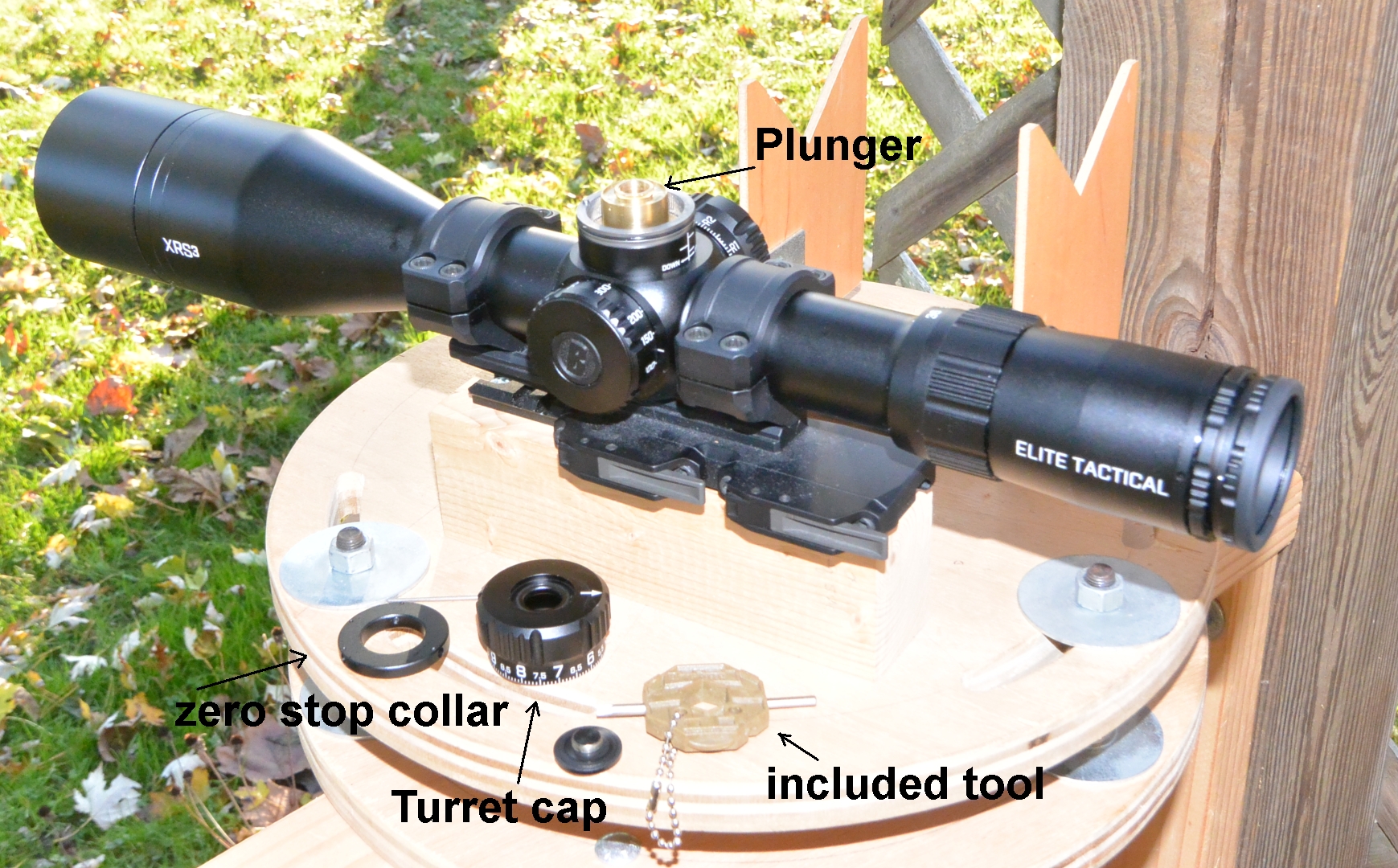
Reticle Options:
At the time of this writing, the Bushnell Elite Tactical XRS3 6-36x56mm comes in just one reticle, the G4P. This is a mil reticle designed in conjunction with G.A. Precision with whom Bushnell partners in fielding a precision shooting team. A detailed diagram of the G4P reticle can be found in the owners manual. Oddly, this full owners manual is not actually include with the scope. Instead, you get a folded quick start guide and a pointer to the website. In reading my thoughts on this reticle, keep in mind that, as with the PR2-Mil reticle in the Mark5HD scope also in this years series of reviews, I am commenting on the work of people who are both more experienced and more skilful shooters than myself. George, the owner of G.A. Precision, has been designing reticles a long time including the one in the first mil-mil scope I ever had.
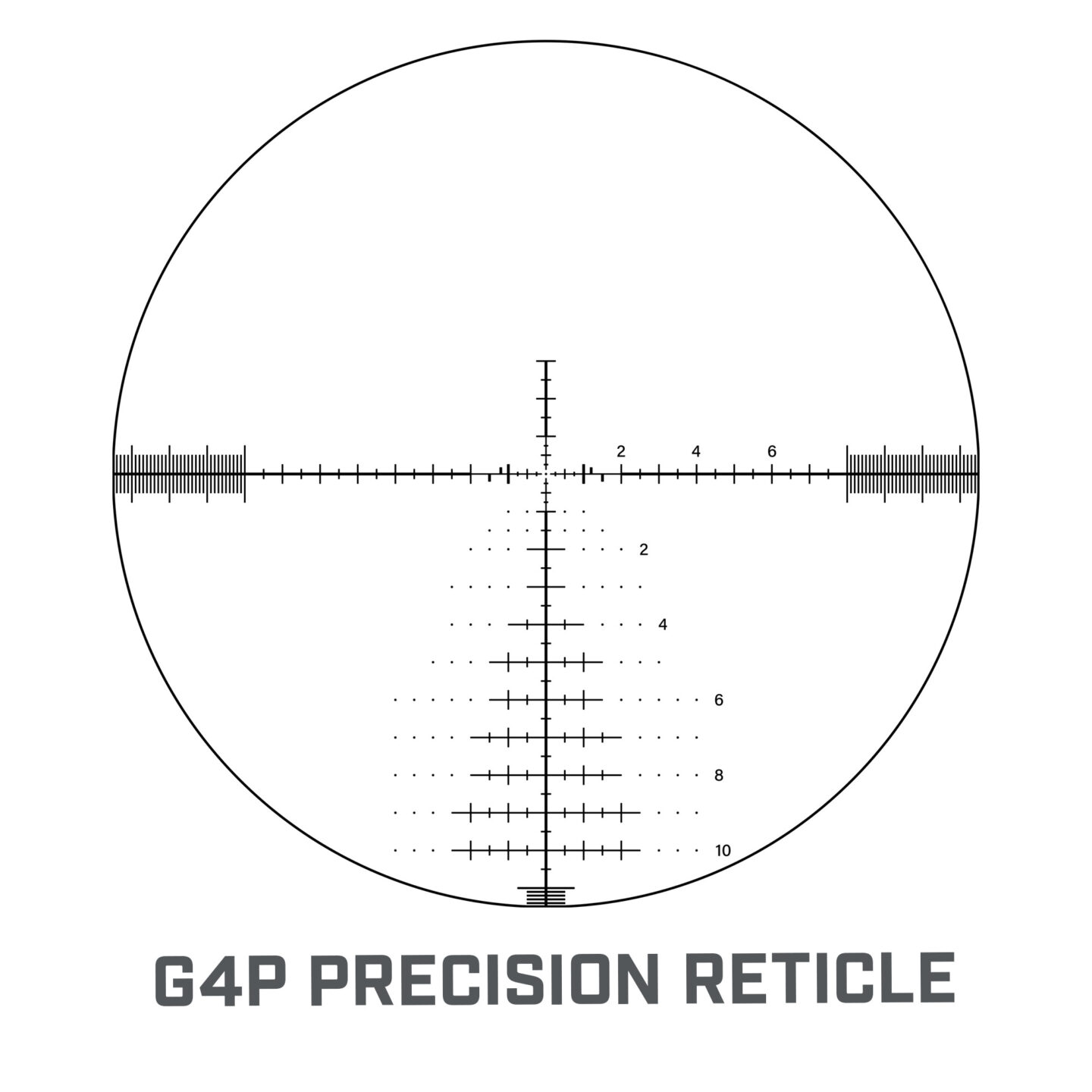
As with previous G.A. Precision reticles, the G4P is a mil design and looking over those previous designs you can certainly trace the lineage from the GAP reticle to this G4P reticle. That being said, the G4P is a great deal more complicated than its predecessor. Some of these changes, such as the floating dot center and removal of the 12oclock crosshair starting 3 mils above the center, open it up a good bit and I think are good improvements. Others, I either just don’t love or actually dislike. First among these is the inclusion of labels only on the right side of the reticle. I find generally find labels well worth the space. I reliably perform faster with them and make less mistakes. Perhaps, this is not so for folks who shoot the same scope day in and day out but I do a lot of reviews and switch around constantly making it pretty necessary to do a great deal of counting between markings in the absence of labels. Another thing that may not bother folks who spend a great deal of time with just this one scope is that the G4P switches graduations a good bit. It goes from .25mil graduations for the first mil to .5mil graduations from there to 8 mils and then the rest of the way with .1mil graduations. There is also an oddball graduation at 1.2mils resulting from a separate “mover marks” feature that I am not versed enough with mover practice to evaluate the usefulness of. Generally, I don’t love mixing graduations and the G4P does a good bit of it. Furthermore, I found the .1mil sections pretty much useless for fine milling as you had to power down below 20x to get to them and their totally un-staggered arrangement made it quite hard to count the lines when actually trying to mil something with them. Actually, I found it totally impossible to do so. So, while in theory I thought the replacement of a solid, thick outer crosshair with this broad fine milling section was interesting, in practice I found it unusable. It’s not that this .1mil outer stadia feature is a detriment, it’s not. I just didn’t end up finding it added any function either.
As with most reticles today, the G4P features a Christmas tree section either side of the .5mil graduated 6oclock crosshair below the central aiming point. G.A. / Bushnell made the interesting choice to make the central part of this feature out of solid lines with the edges simply dots. They also made the choice to place horizontal branches every 1mil but graduations on those branches at .5mil increments. The horizontal branches are labeled every 2 mils but no labels exist for the graduations of those branches even as those graduations switch from lines who’s length denotes mil or half mil to dots with no such demarcation. That switch also does not always happen at an even mil graduation. It is sometimes on a half. Lastly, there is an extra horizontal branch at 1.5mils. So it goes 1, 1.5, 2, 3, 4… Tree features are, of course, always a trade off between having less obstruction to see splash, etc. and having more potential aiming points for extreme holdovers or, more often, competitive stages with insufficient time to adjust or prohibitions against doing so. I vacillate in my opinions of the advisability of trees generally but I did find this one a bit more complex than I would like.
Probably the best way to characterize the G4P reticle is that it has more of a learning curve, or perhaps more accurately practice curve, than other designs. Given the success and experience of the designers, it is likely quite well suited to fast paced competitive shooting. There are ways to trip yourself up on it though if you are unpracticed in all the switches and nuances of the design.
In my test scope, the reticle size was spot on with only the slightest cant CCW relative to the adjustments of ~.4 degrees (.1mil horizontal in 14.8 vertical mil)
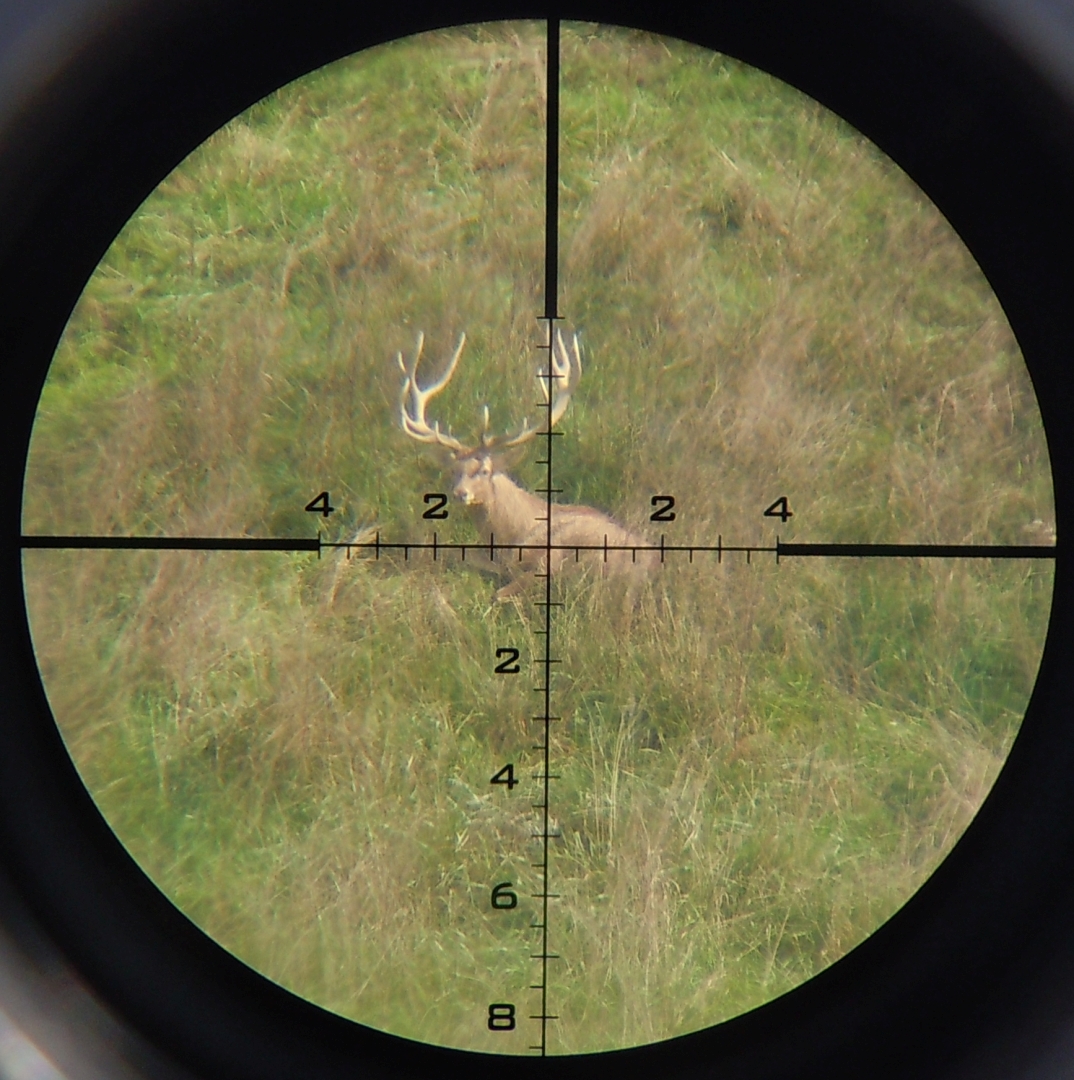
Comparative Optical Evaluation:
When I first opened the Bushnell Elite Tactical XRS3 6-36x56mm my expectations of it’s optical performance were not rosy. The scope is relatively long behind the turret and short in front. Scopes of this layout typically have large power multipliers, something a long erector is helpful with, but often are not optically great because they are doing so much with the small lenses in the erector section and less with the larger objective group. The XRS3 is also quite short overall given it’s substantial, 36x max magnification. Customers seem to like short scopes though I am not entirely sure why given that they often suffer from less than ideal optical performance, particularly when it comes to chromatic aberration. As we shall soon see though, my expectations of this scopes optical performance were far off the mark. It proved excellent.
For optical comparison with the Bushnell Elite Tactical XRS3 6-36x56mm I first have the other scopes from this years series of ~$2k rifle scope reviews, the Sig Tango6 5-30×56, Minox 5-25×56 LR and Leupold Mark 5HD 5-25×56. As per usual, I also pulled an example of both a significantly more costly and less costly optic. For these I used an Athlon Midas TAC 5-25x56mm, one of the better performing from my series of sub $1k optics, and the much more costly alpha tier Minox ZP5 5-25×56 still around from it’s review earlier this year.
As should be expected, but is not always the case, the optical performance of the scopes compared during this review did break down into the respective price brackets. All of the ~$2k scopes generally outperformed the ~$1k scope and the ~$3k scope outperformed all the ~$2k scopes. I had heard some talk on the hide of the XRS3 alpha slayer, don’t kid yourself. The XRS3 is a very good ~$2k scope, it is not a $3k+ alpha tier optic. As a general rule, optics are not like wines, it is not common for one to out perform a model twice it’s cost.

The Bushnell Elite Tactical XRS3 6-36x56mm was the most consistent optical performer across all areas of performance in the field of ~$2k optics. While it only topped the class in one area of optical performance It did not lag the pack in any. This is notable because, while the scope topping each area of optical performance over their peers typically did so by just a hair, each scope at the bottom of a category was usually well off the pack in that, sometimes major, measure of optical performance. In edge to edge clarity the Leupold Mark 5HD lagged, in depth of field it was the Minox LR, and for chromatic aberration it was the Sig Tango6. All of these are very important areas of performance and all of these scopes significantly lagged the pack in these areas. The Bushy never did this, it essentially did well on all measurements and showed a remarkably well balanced design.
Breaking it down starting with the area lead by the XRS3 over it’s cost pears, the Bushy slightly edged out the field on CA where it performed just slightly better than the also excellent Leupold and Minox models with the Sig lagging a bit. In field of view, the Bushy was a close second behind the roomy Minox and a good bit ahead of the others. It was similarly second in DoF behind the Leupold this time. Notably, both were ahead of the costlier Minox ZP5 here. This was the only significant measure where the alpha tier scope gave up performance to any mid priced rivals. The bushy did similarly well on low light performance and color rendition as well as on edge to edge clarity where only the Minox LR bested it at similar cost. On contrast, the Bushy finished dead center of the pack and it resolution it was a little behind the average in a category where all four scopes did quite well and there was very little separation.
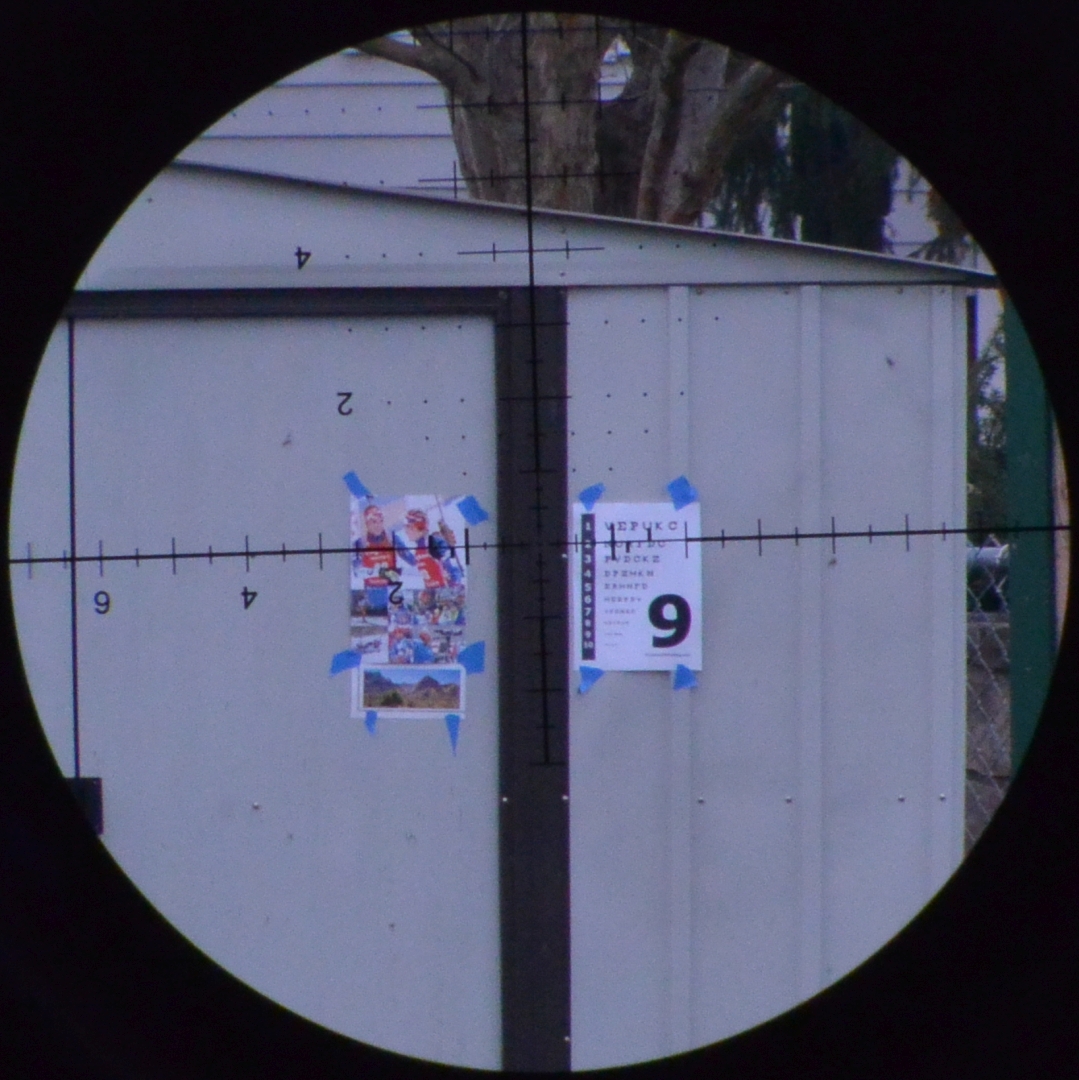
In the areas of performance I have begun to measure stand alone instead of comparatively, eyebox, stray light handling, and pincushin / barrel distortion the Bushnell did just fine. It really showed no distortion at all, not that this is particularly important in a long range optic. It’s eyebox was perfectly sufficient and it did not have noticeable problems handling stray light either with respect to flare problems or a generally hazy appearance. Stray light is an area of performance that can be quite significant but is probably the hardest to measure in a systematic and even handed way.
The takeaway from all of this is that overall, I found the Bushnell Elite Tactical XRS3 6-36x56mm to be the best performer optically of the ~$2k scopes that I tested. And, given it’s large power range, and short length, I was surprised by this result. Props to their engineers on the well balanced optical design.
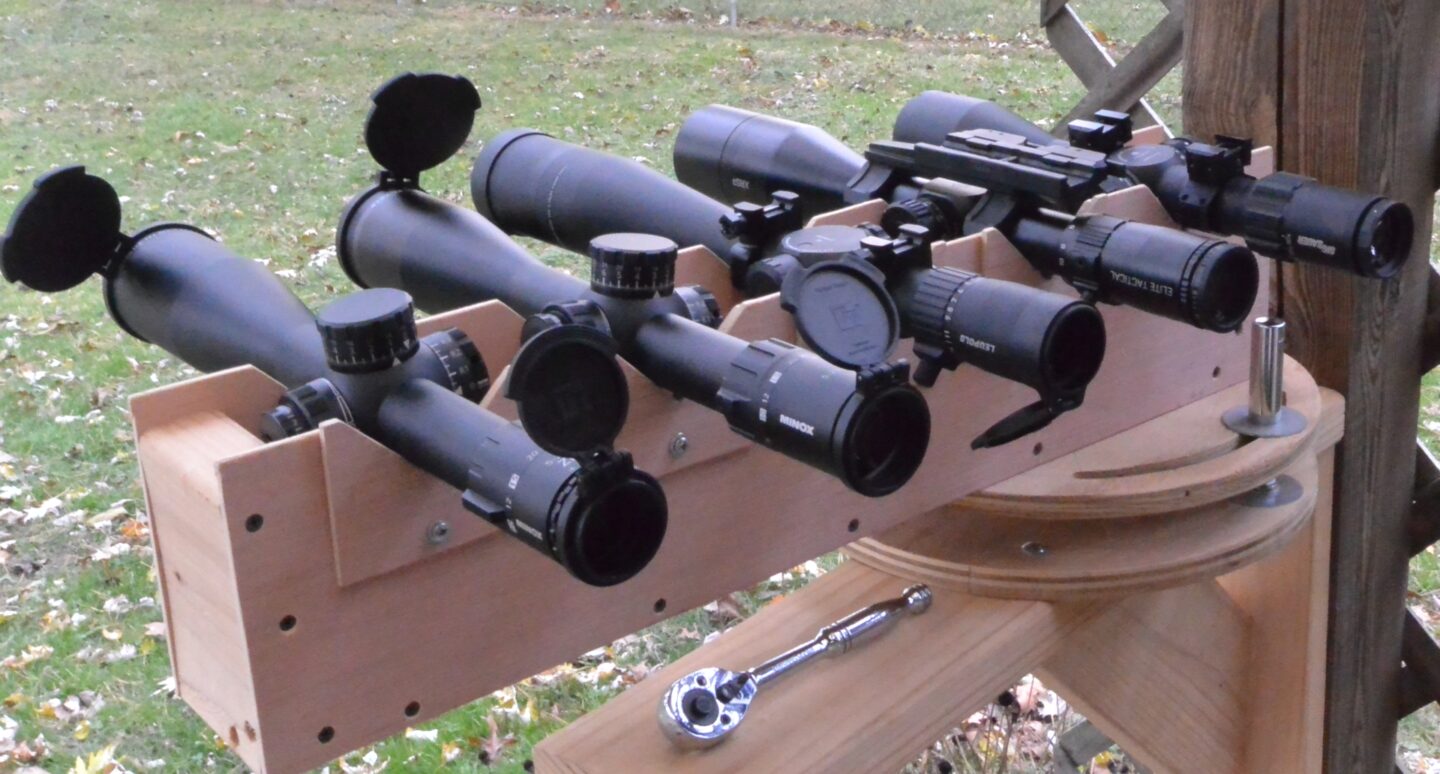
Mechanical Testing:
Most scopes have some deviation from perfect adjustment magnitude, though they are doing far better now than just a few years ago. This adjustment magnitude error will vary from example to example within the same model of scope. This is because it is not a product of design errors but rather variances introduced within manufacturing and, particularly, the assembly. Thus, the performance of my test samples is a piece of information with only limited value due to representing only one example. Often, we measure adjustment magnitude error as a percentage such that a scope whose reticle moves 10.1 mils when adjusted 10.0 mils tracks at 101% and one who’s reticle moves 9.9 mils when 10.0 is dialed tracks at 99%. Frank has helpfully compiled a list of adjustment deviation of all scopes he has tested in class that can give you an idea of how often, and by how much, adjustment magnitude deviates from ideal.
When adjusting up from zero, the Bushnell Elite Tactical XRS3 6-36x56mm I tested read 14.05 mil on target when adjusted 14.0 mils on the knob. This equates to 100.4% on Frank’s scale and represents well under a 1% deviation from ideal. Total adjustment range up from zero was 14.8mils at which point adjustment movement and turret movement came to a simultaneous stop. Adjusting down from zero (this is easy to do on the Bushnell as collar style zero stops can easily be removed without changing the adjustment), the XRS3 read 13.05 mils on the target at 13.0 mils on the turret and adjusted to a max of 14.1mils on the turret. This very small degree of deviation on the XRS3 was also linear in nature and therefore can be easily factored into ballistic solver calculations though it was of such a small magnitude that this would seem superfluous. A very good result for the Bushy.
As mentioned earlier, on the windage adjustment on the Bushnell Elite Tactical XRS3 6-36x56mm you can reset the zero marking on this knob but you cannot reset the actual stop. As such, the windage will only ever adjust about 8 mils each way from optical zero, for a total windage adjustment of roughly 16 mils. This limited windage was a conscious trade off in the design. It maximizes the scopes elevation travel while still preventing impingement of the erector tube on the maintube side when both windage and elevation are near maximum adjustment. You can run both your elevation and windage to their maximum limits on this scope without hitting the tube side and having movement in one direction effect the other. Since the windage knob on the XRS3 is of the locking variety, I also tested it for spline slop, no measurable amount was present.
As mentioned earlier, the reticle size was correct in the Elite Tactical XRS3 6-36x56mm and there was only the slightest cant CCW relative to the adjustments of ~.4 degrees (.1mil horizontal in 14.8 vertical mil). I also did not observe point of aim shift with power or parallax adjustment. In total I feel the XRS3 tested quite well mechanically. What small deviances it showed would be within what I would consider to be expected QC tolerances.
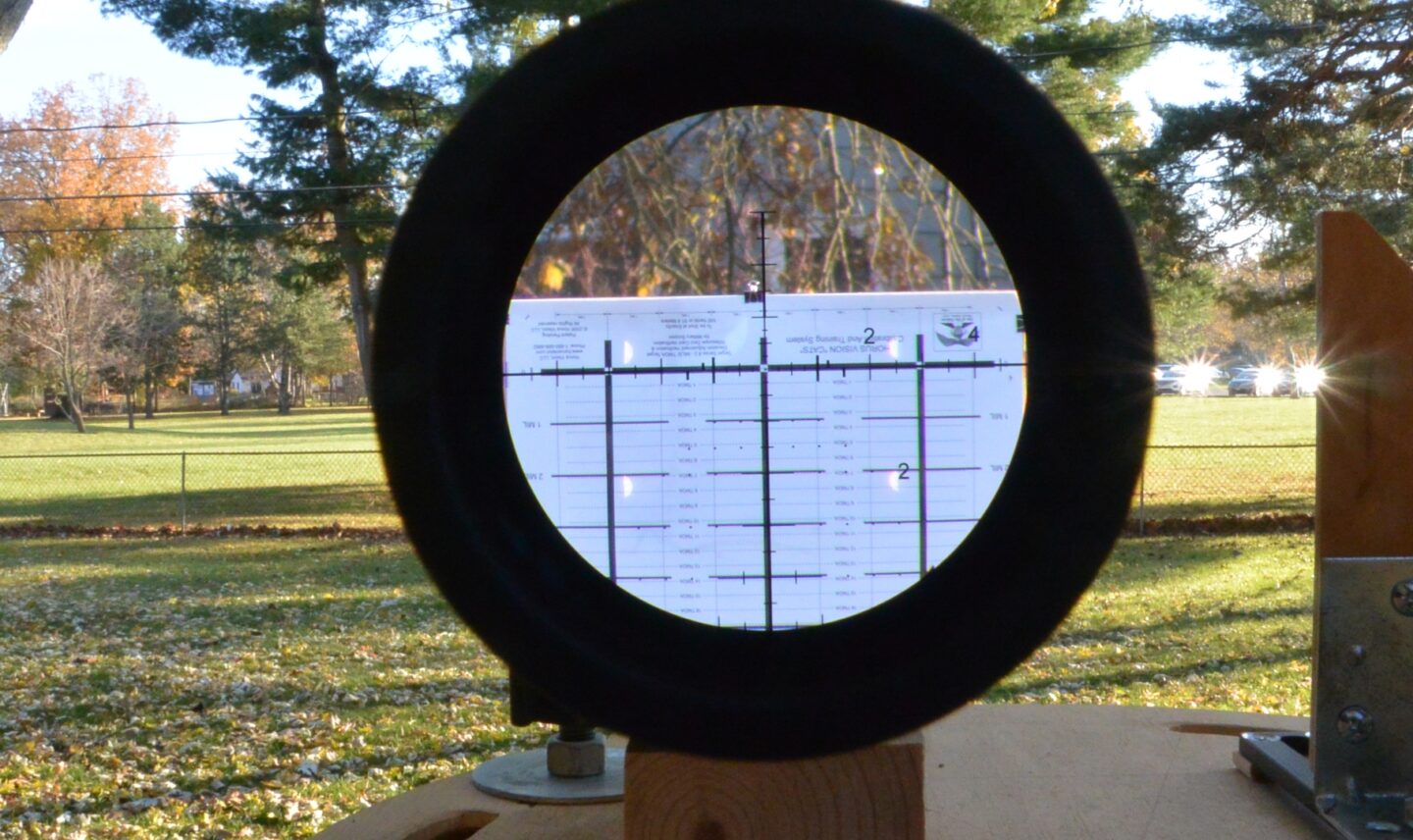
Summary and Conclusion:
With a full MSRP of $1.7k, is the Bushnell Elite Tactical XRS3 6-36x56mm is the lowest cost optic in my ~$2k roundup. In some ways, this shows. It’s turrets are simple and relatively low in features, it lacks illumination, and the extras included with the scope are relatively sparse. Most notably, they do not include flip caps despite the parent company of Bushnell owning a company that actually makes them. Come on, it’s got to be like $4 to include some Butler creek caps and save me all the trouble of measuring and maybe picking the competitors caps anyway. Just charge me the $4, include the caps, and avoid this whole diatribe.
In more important ways though, the Bushy out performs it’s cost. On balance, it was the best performing optically of all the ~$2k scopes tested this year despite it’s short length, large 6x erector ratio, and high 36x maximum power. Effectively, you end up giving up nothing for these desirable features. Well, maybe not nothing. The XRS3’s 29 mils of elevation is likely less than it could have been if a lower top magnification number was designed for. It’s still pretty good though. With the XRS3, you also get access to a reticle designed by some of the most experienced and successful shooters in the industry. I don’t love the reticle, but I expect many will and I don’t hate it either. At present, the Bushnell Elite Tactical XRS3 6-36x56mm comes in only one reticle, the G4P, and no available illumination. Given the now evident weaknesses of long supply chain, single sourced, just in time, global capitalish-m, I am frankly impressed they have managed to land any of these on shelves this year. I expect more options will probably materialize in the not to distant future. I also expect this model to be in the catalog a long time. It is an excellent design.
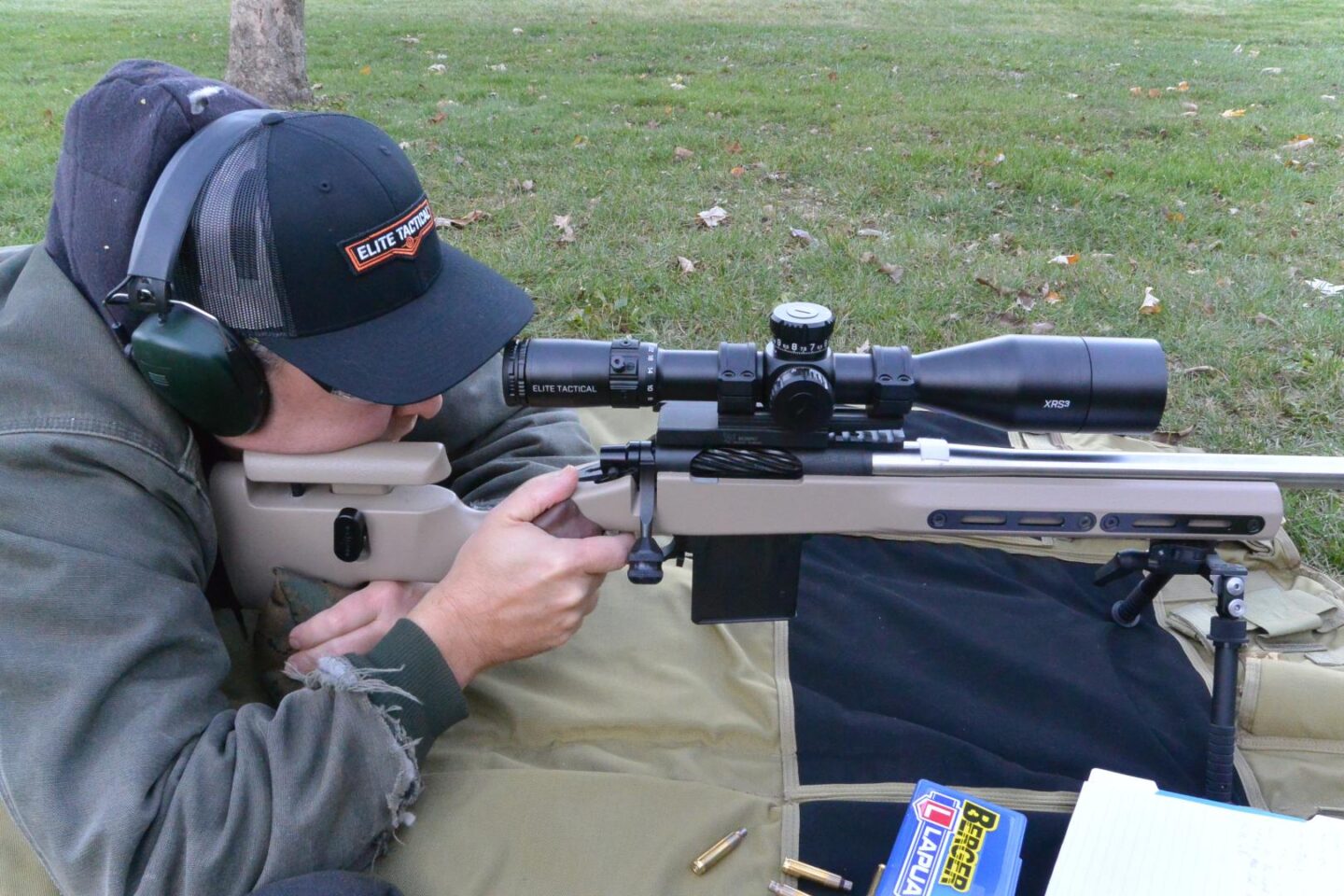
Your Pro and Con Breakdown:
Pros:
– Overall best optical system in a ~$2k scope I have tested
– Lowest MSRP in the ~$2k series of scopes I have tested
– High, 36x max magnification
– Large, 6x erector ratio
– Slick removable and repositionable throw lever Bushy hyperbolically christens the “THROWHAMMERTM“
– Short length which folks care about more than they ought to but is still nice
– OEM and / or brand have a good reputation for QC, Durability, and Warranty
– Comes with sunshade, an always under rated piece of kit
Cons:
– 38.9oz is heavy
– Elevation knob is simple and low on features though it’s design is quite robust and versitile
– Only 15 mil of windage and stop cannot be moved
– No options at this time
– No flip caps included despite the fact that the company that owns Bushy also makes caps.

